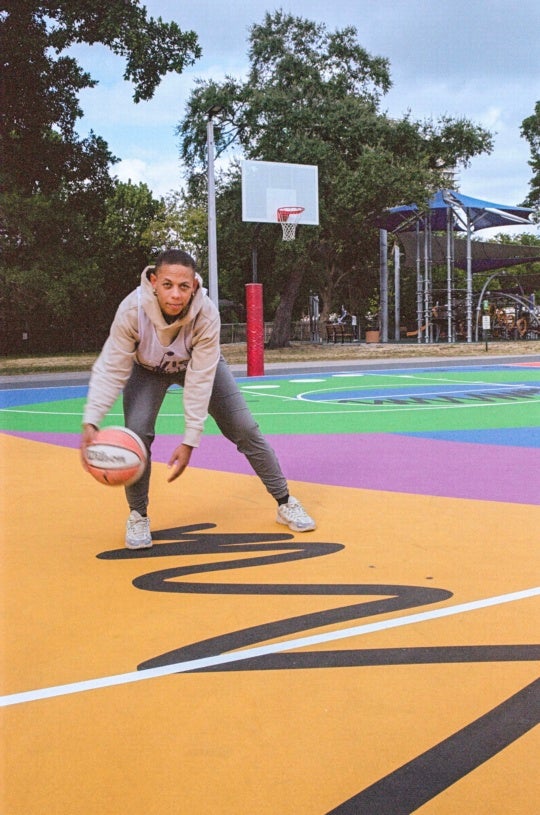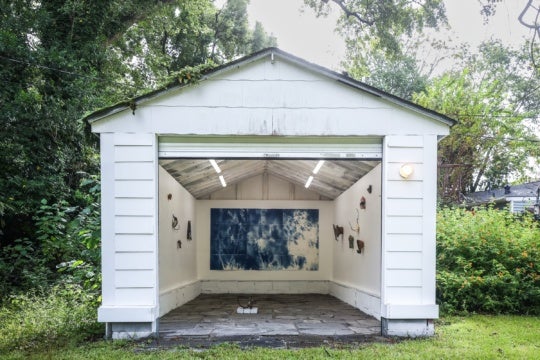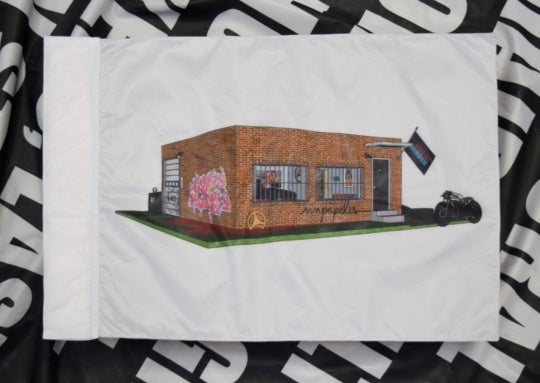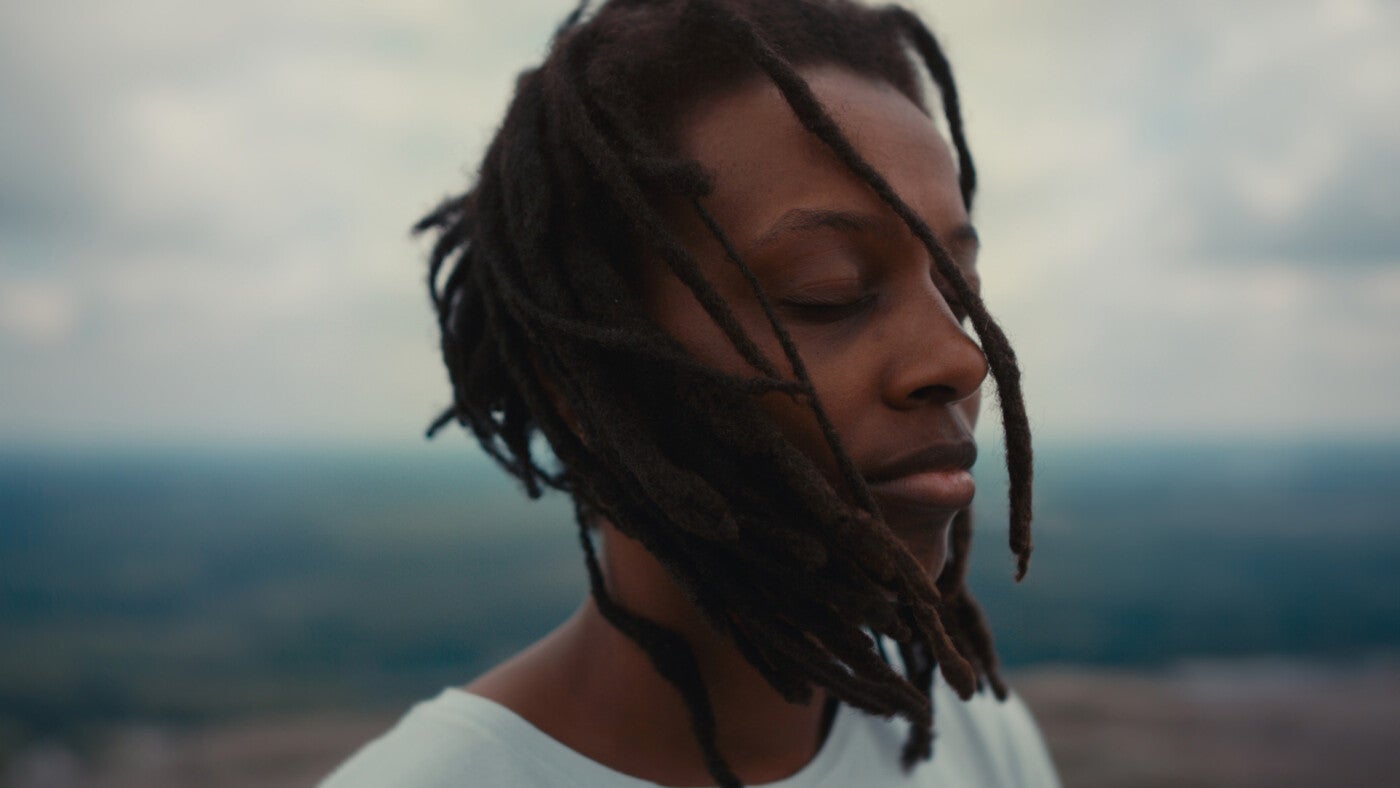
Setting an eerie scene, a camera pans out from a mountainside carving of Confederate calvarymen, while a choir belts out the bluesy, soulful strains of Pastor T. L. Barrett’s “Nobody Knows,” and decrescendos on the phrase “glory, glory.” This monumental site of haunting glory, Stone Mountain in northern Georgia, serves as a point of response for artist Le’Andra LeSeur’s film Monumental Eternal (2024) and eponymous solo exhibition.
In this conversation, we discuss LeSeur’s new body of work as materializations of her emotional and visceral experiences at Stone Mountain, reflecting the lingering impact of racist dogmas on Black psyches and bodies. She relates each piece’s enduring, physical performance to forms of anti-Black violence and her attempts at spiritual transcendence, exemplified by her titular film where she slowly falls backward atop the mountain as a spoken word poem tenderly narrates her experience as a queer Black woman in the American South. True to her self-identification as a “feelings-based” artist, LeSeur also expresses the physical and sentimental through glass-blown sculptures and abstract paintings: the former encasing similar breathwork she practiced at Stone Mountain and the latter bearing marked gestures emblematic of anxious hand tics during these site visits. While poignantly capturing the tension and anticipation for resolution on ongoing social crises, particularly felt by Black communities, LeSeur proposes a slow collapse as a necessary part of healing and rebirth, ultimately “learning that [she is] a soft place to land.”
The following conversation was edited for length and clarity.
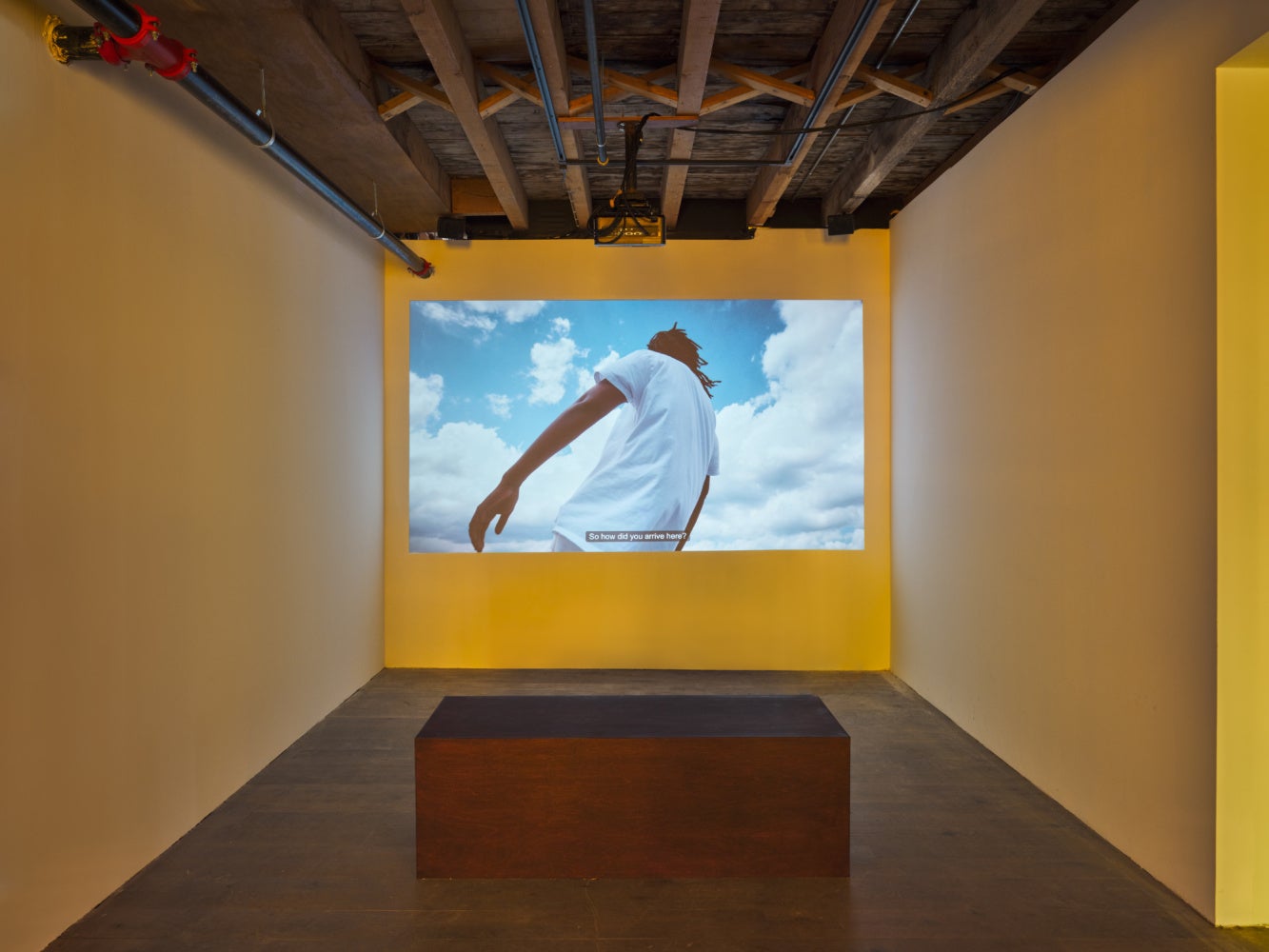
Haley Clouser: What led you to create a body of work focused on your experiences at Stone Mountain?
Le’Andra LeSeur: I grew up in the Bronx, NY, and moved to Stone Mountain, Georgia, when I was eleven years old. My family and I used to visit Stone Mountain park for fireworks and laser shows during the holidays. While we assumed the site’s connections to the Confederacy, the park refrains from explaining the history of the carving. It wasn’t until I went to the Equal Justice Initiative in Montgomery, Alabama, around 2016, when I watched the documentary Segregation in America: Stone Mountain and realized the site’s ties to the Ku Klux Klan. Stone Mountain went from a space of joyous memories to a weighty, haunting space.
Years later whenever I visited the site, my body responded in a visceral way, and I wanted to figure out how I could honor that response in my work. All the works in the show are experimentations on ways to give my body a tangible language. For instance, the paintings are composed of gestures representative of my hands’ fidgety, anxious tics that I experienced at the site. So, my gestures become a marking of time, experience, and a language that maybe I can’t say but my body is speaking.
HC: In Monument Eternal, you repeatedly and slowly fall backwards on the mountain’s peak. What inspired the act of falling and what significance does it hold?
LL: In early 2020, I read Monument Eternal (1977) by Alice Coltrane, where she discusses tapas, a Buddhist concept where harm is inflicted on the body to transcend the physical vessel and reach spiritual enlightenment. This idea of pushing the body to its limits—especially through painful acts—and transforming that experience into something else resonated with me deeply. I was also writing about my visits to Stone Mountain and reflecting on ideas of collapse. For me, the act of collapse can feel like a violent act, but it also represents an opening into something new.
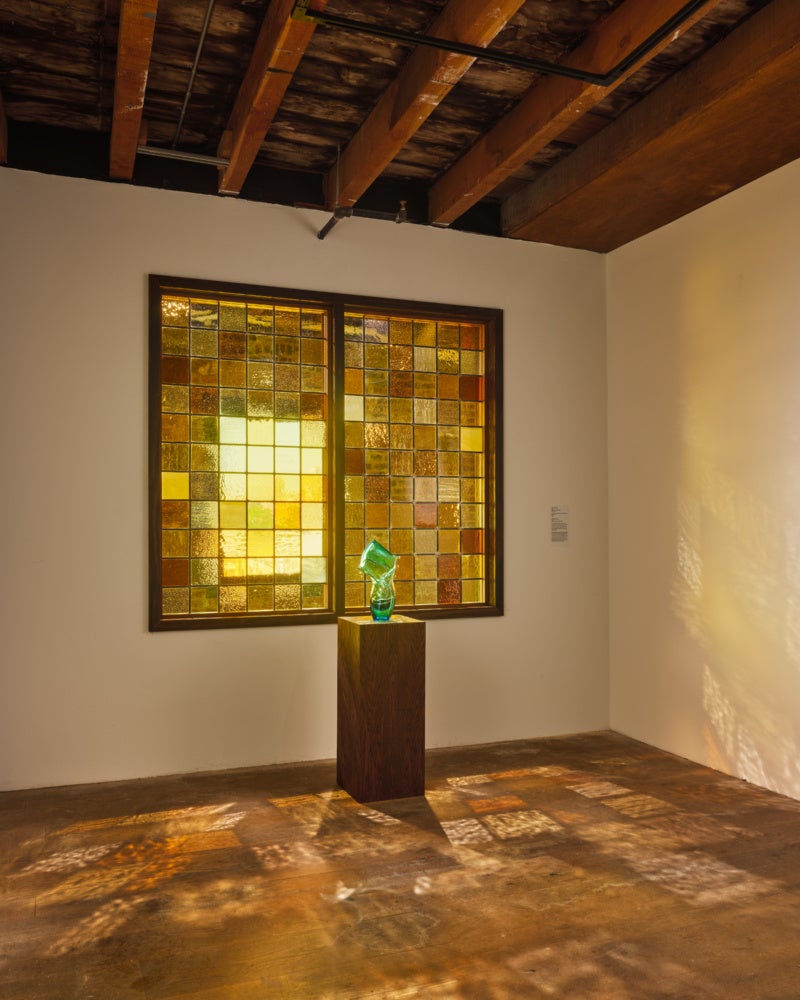
When I was offered the exhibition at Pioneer Works in 2023, I began to think about documenting collapse and how it could connect to the history of the site. Stone Mountain symbolizes broader societal issues, particularly the persistence of histories of racism and violence. These unresolved histories shape our present understanding of the world today. This raises the question: What must be done to confront this history? And does that process require a kind of collapse, a breaking down, to regenerate something new?
HC: Throughout this work, I’ve noticed recurring themes of delay and extended duration, which resonate with the site’s history. Decades after the Civil War, Confederate sympathizers erected monuments across the South to perpetuate the “Lost Cause” narrative, as seen with Stone Mountain, which was constructed in 1923 and completed in 1972. In a similar vein, your film prolongs the act of falling over a span of seven minutes, leaving viewers suspended in anticipation of your landing. From the structure’s ahistorical construction to the pacing of your performance, there seems to be a shared emphasis on delay. Is there a connection between the time-lapse in your performance and the delayed history behind the making of Stone Mountain?
LL: I think there is a correlation even if I’m not directly saying it. Slowing down the footage allowed for a deeper abstraction and an allowance to let tenderness seep through a moment of tension and pain. As an artist, I’m exploring how beauty can persist amid violence.
This delay also speaks to the history of Georgia, which continuously upheld the values of the Confederacy with a decades long commitment to finish the carving in 1972. In 2004, when the monument was contested for featuring the old Georgia flag, essentially the Confederate flag, the state government removed the symbol but passed legislation to protect the carving. I was drawn to this site because it demonstrates a sustained, deliberate effort to preserve a history of racism that endures to this day.
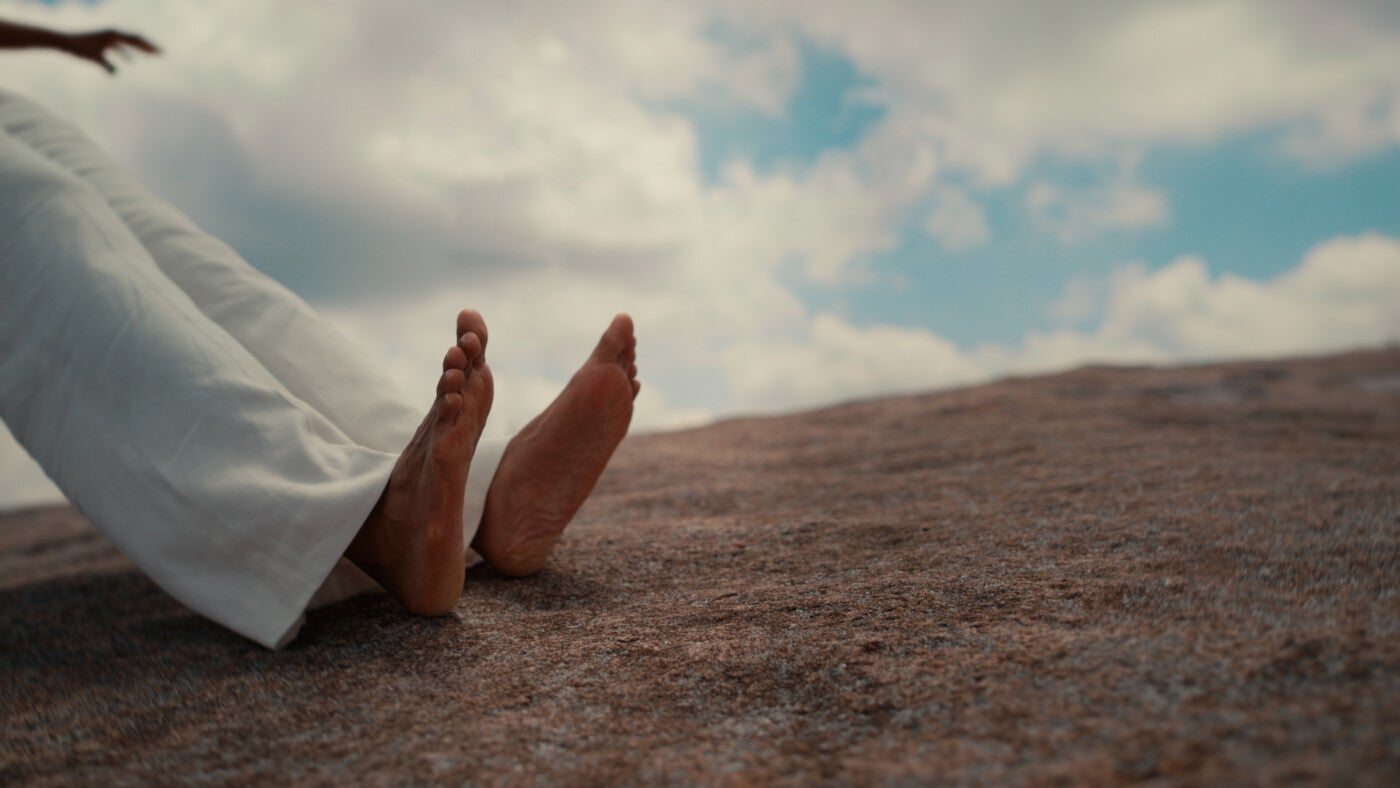
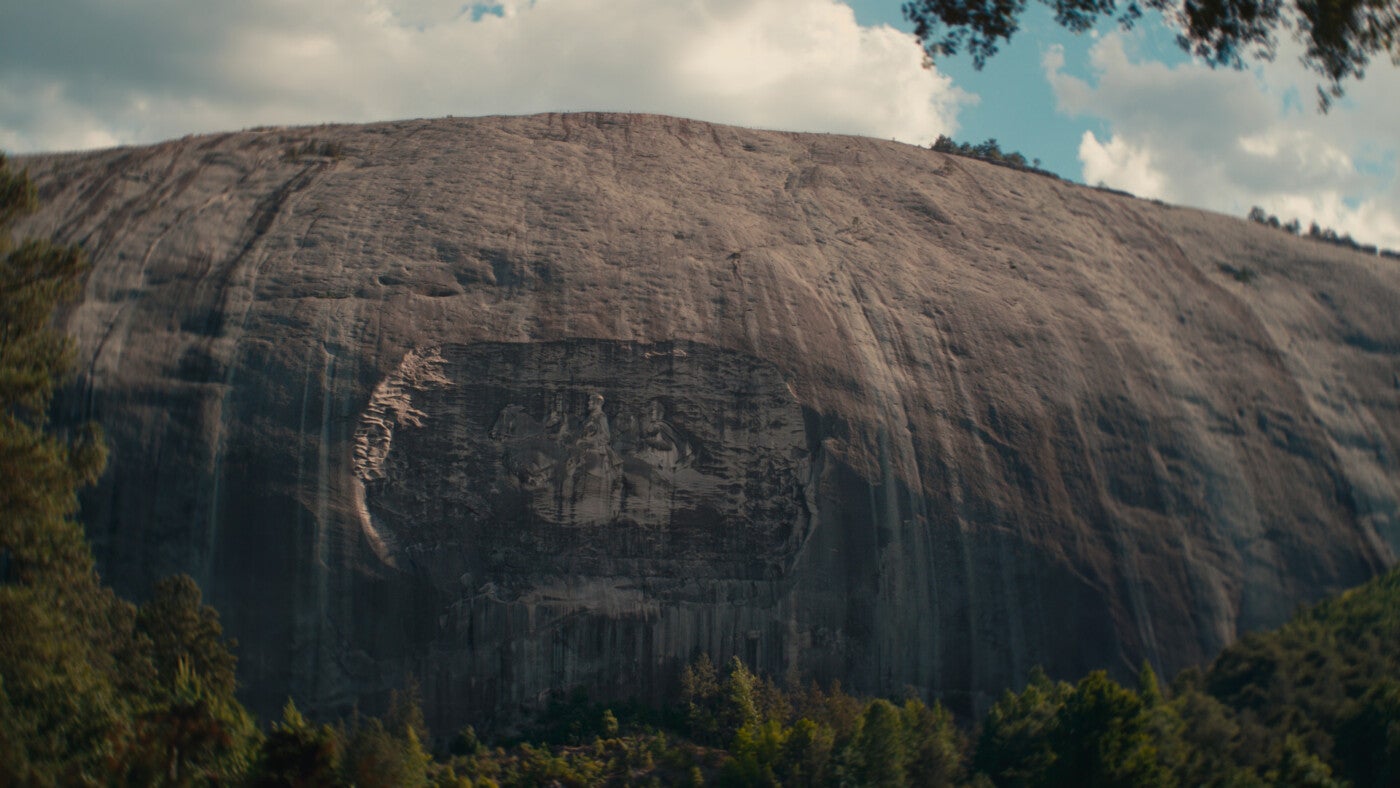
HC: What was the process behind filming this performance?
LL: It was quite interesting because you don’t realize that your body is built to protect you from falling. Your feet find every way to try to catch you, so I had to prepare for months and practice surrendering.
We scaled to the mountain’s summit, where the videographer, Kai Dickinson, filmed me falling backwards numerous times on a Phantom Flex camera, which shoots 2,000 frames per second to produce slow-motion footage. The act of falling took a toll on my body so we ended filming early and Kai decided to shoot around the mountain, including its carving. Initially, I was very intent on obscuring the video’s setting since I like to abstract my works, but when we began editing the film, the shot of the carving was so haunting that I decided to include it and use it as a time marker for the film, which feels very interesting in terms of the resurging history I am speaking to.
HC: I also wanted to talk about your positioning in the film. It presents an interesting juxtaposition between permanence and impermanence, where you fall—an instantaneous movement—on top of a solid structure of a mountain, whose engraving is legally protected in perpetuity.
LL: Falling right above the carving was an important factor for me energetically. It was a way to confront a monument that has attempted to break me down, a weight that I have had to carry in my body for so long.
For me, the act of collapse can feel like a violent act, but it also represents an opening into something new.
Reaching your breaking point is not instant; it’s a prolonged process. So I wanted to emphasize this idea of a collapse as slow and contemplative. For me, it was about portraying my humanness during the collapse. The stature of my body moments before the fall evokes the power and presence of a monument that you might look up at, a resilient figure. As I fall, my body’s surrender becomes less about resilience and more about the acceptance of fragility and softness as a way of being.
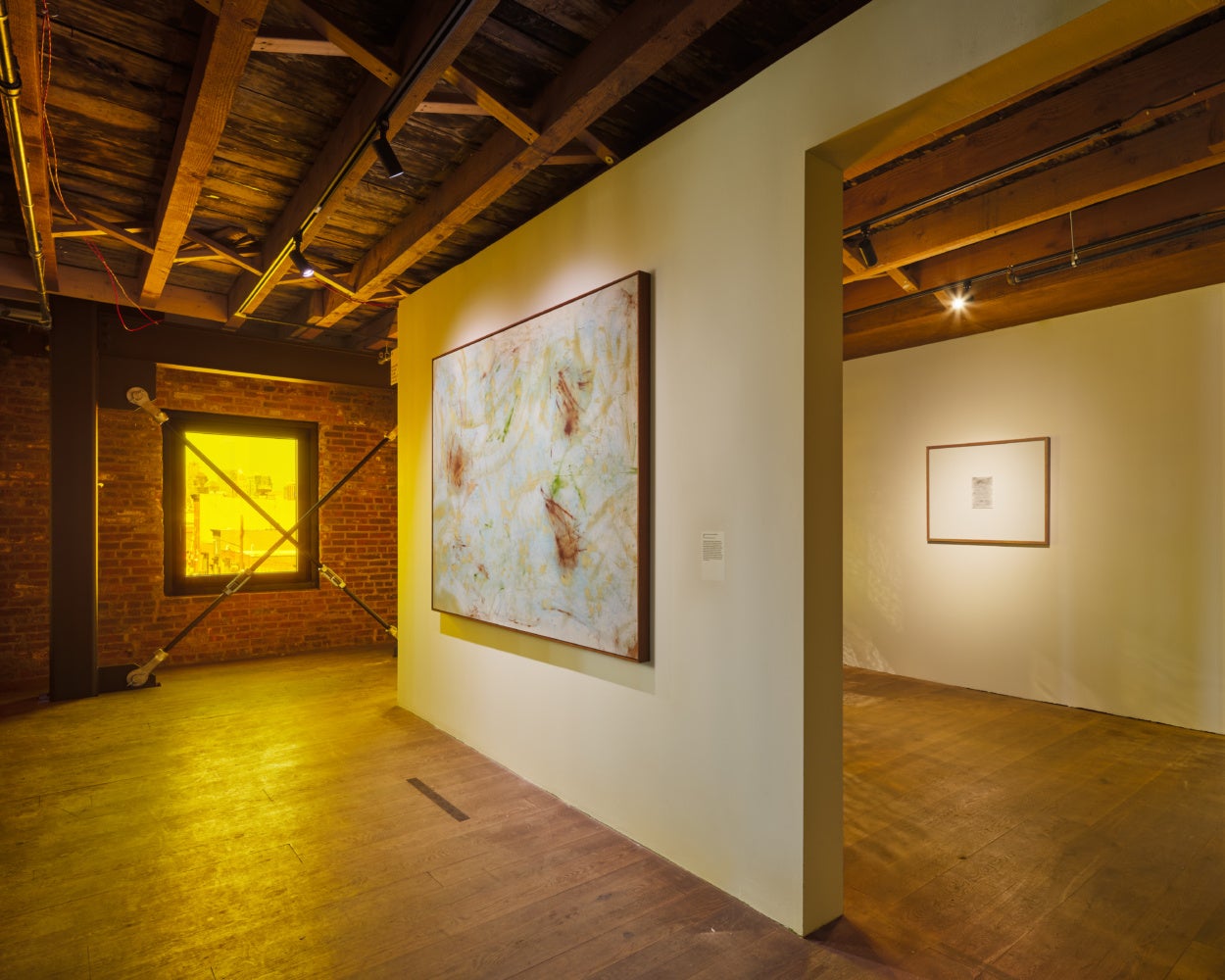
HC: The spoken word poem overlaying the film, some of which are extracts from your writings in 2019 and 2020, add layers of complexity to a rather straightforward recording of a fall. For instance, you recite: “My Black mother birthed me into the blues,” a statement that recalls the film’s backdrop of a blue sky, conjures ideas of despair, and draws connections to jazz and blues, much like Coltrane’s music. What role does color play within your poetry and how does it manifest within the works?
LL: The text is heavy with so much symbolism. That line in particular is the title of a portrait of my mother that I finished in 2019 but the sentiment has a few meanings. There is an innate sadness present when you truly start to reckon with what it means to exist in a world that has continuously told you that it doesn’t want you here. I was navigating the feeling of the blues as a way of life and I started thinking about how interesting it is to talk to my mother about this experience knowing that she birthed me into this. The phrase then becomes a representation honoring my mother’s love amidst the grief present in the world and an honoring of so many Black matriarchs that I have learned from and that have given me frameworks and language for how to exist within it.
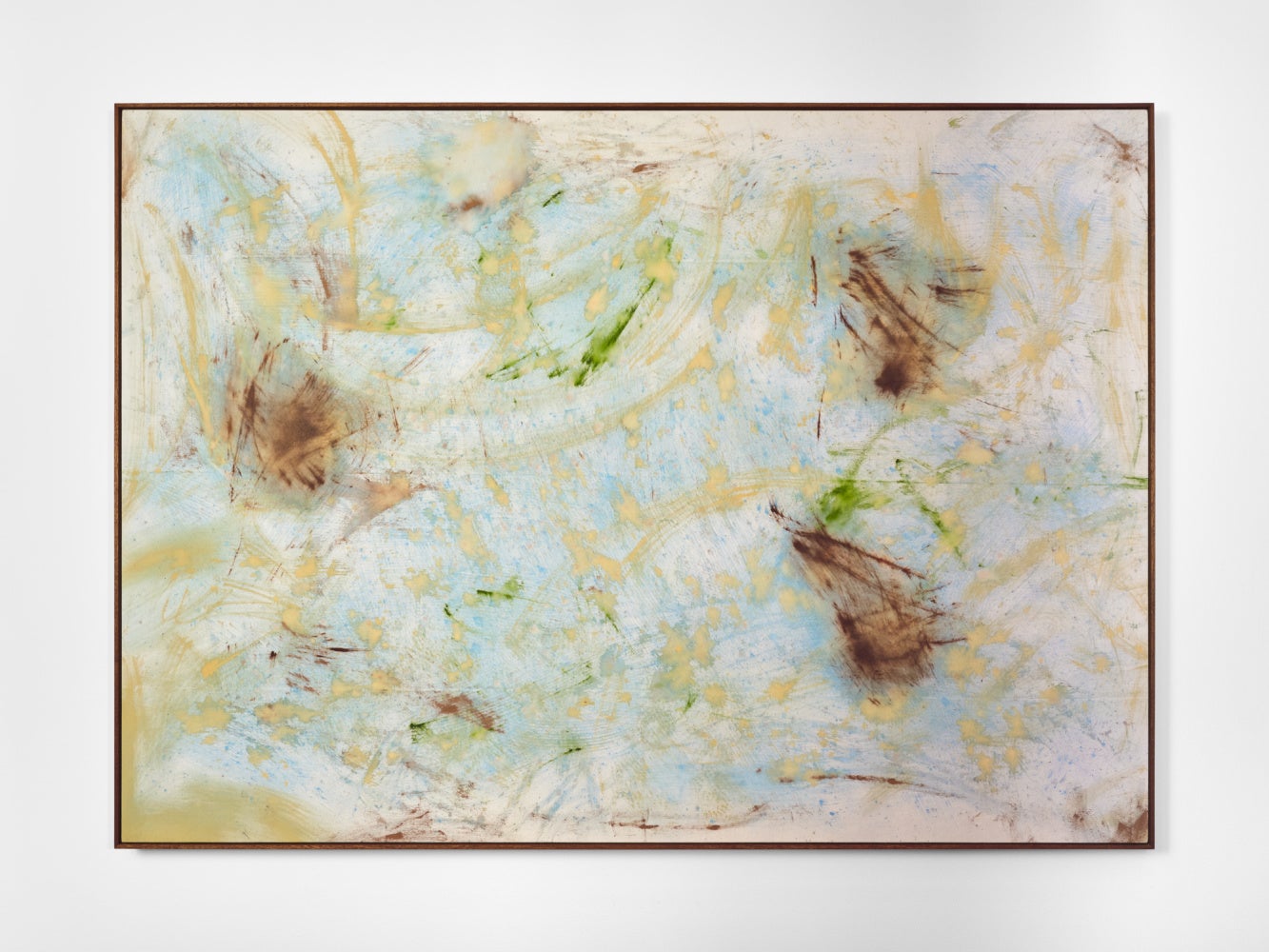
The colors in the paintings stem from these experiences as well as faded memories of visiting Stone Mountain as a child. One of the paintings, A faint touch of bones remembering (2024), has blues, yellows, and reds that are somewhat muted, but feel very visceral on the canvas. Here, I was remembering back to the park’s lush green landscape, waterways, the leaves’ changing color, the firework display, and the stone’s greenish-yellow tint. When I was falling, I also kept recalling this memory of walking into my childhood church in the Bronx and seeing natural light pass through stained glass, very similar to those at Pioneer Works. There were dust particles moving through yellow, gold, and amber light, and I often imagined this light holding up my body as I was going through this fall.
HC: In the exhibition, you also feature new glass blown sculptures—a medium that feels in dialogue with the earthen materials at the site and bodily modes of release.
LL: I’ve been interested in glass for a while because its properties feel so familiar and resonant with bodily experiences, from its fragility to resilience. While at Stone Mountain, I was monitoring both my body and breathing. I then applied that breathwork to glassblowing—exhaling to build the glass up and inhaling to cause the glass to collapse in on itself. It became a physical manifestation of the acts in the film and continued these ideas of “collapse.”
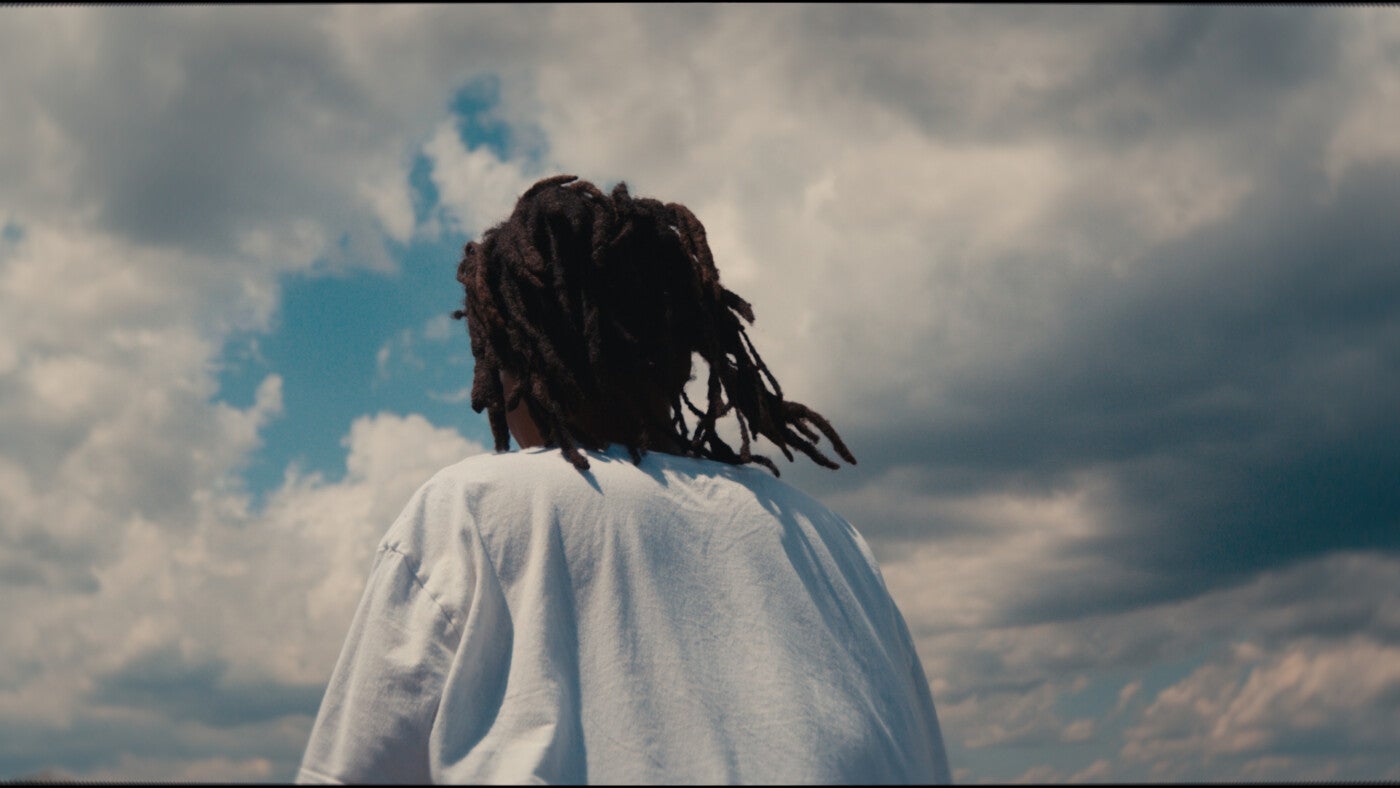
Le’Andra LeSeur: Monument Eternal is on view at Pioneer Works, New York until December 15, 2024.

